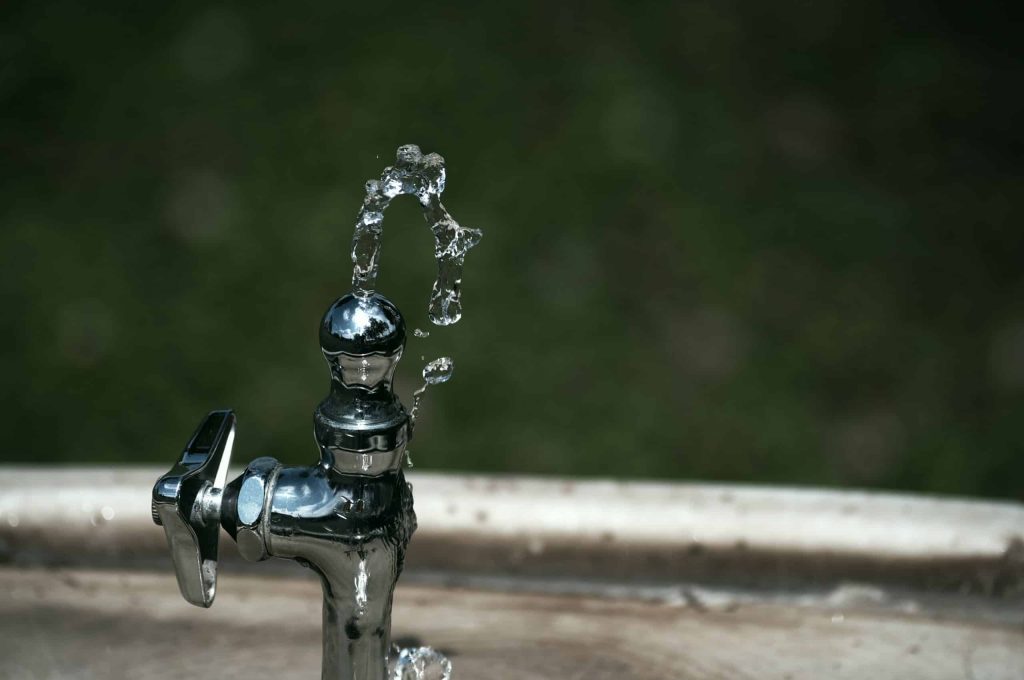In 1908, New Jersey became the first US city to utilize chlorine as a disinfectant in their municipal drinking water supplies. Today, approximately 98 percent of the country uses some sort of chlorine disinfection process to decontaminate our drinking water. As discussed in our previous blog, Americans have grown increasingly concerned about the contaminants in their water supply. While chlorine may not impose an immediate health threat, it could affect the taste of your water, dry out your skin, and damage your hair. After all, chlorine is classified as a “micro pollutant.”
When chlorine is absorbed by hair shafts, the hair loses sebum, its natural lubricant. By interfering with the scalp’s natural moisturizing process, our protective cuticles will start to crack, leading to brittle hair. Fragile hair can, in turn, lead to many other issues such as dandruff and hair loss. As the scalp dries out slowly, an individual may face an increasing amount of flake. Excessive exposure to chlorine can also affect hair growth as it reduces the living tissue in hair follicles. Women tend to experience hair fall after moving to a country that utilizes hard, unfiltered water. When our hair becomes dry, it is more delicate; therefore, chlorinated water can either be the cause for hair loss or exacerbate the condition. While this issue may be more prevalent for people with blonde hair, chlorine could possibly alter your hair color. Chlorine pools tend to have a greenish tint, which occurs when chlorine interacts with metal pipes, and can impose that tint on blond hair as well. If you want to learn more about the health risks of chlorine, click here.
Fifty four percent of Americans receive clean water using chlorine, while 45 percent obtain drinking water that is disinfected by chloramine, which is a compound made up of chlorine and ammonia. Because chlorine evaporates at a faster rate, cities have transitioned to using chloramine as a backup disinfectant because it kills germs efficiently. Another benefit of chloramine is that it forms fewer disinfection byproducts (DBPs), which are considered toxic. Nevertheless, chloramine is comparatively less effective in the inactivation of E. Coli and rotaviruses, which cause diseases. Chloramine cannot be removed simply by boiling or distilling the water. Of course, while drinking chloraminated water not only impacts our health, but it also degrades our plumbing systems, chloramines are most toxic when you are exposed to during a hot shower. A study has shown that such showers can liberate between 50 to 80 percent of the dissolved chemicals into the air. Pores are widened by hot water, which increases absorption of harmful chemicals through your skin and scalp. The steam from a hot shower carries the chloramine vapors, and its toxic DBPs can accumulate in enclosed areas. Inhaling these harmful chemicals can also cause or worsen existing respiratory problems. A post detailing the health effects of chloramine can be found here.
While the US continues adding these harmful disinfectants into our water, countries across the globe have progressed toward using ozone, where no chemicals are added during the disinfection process. While we may not have the choice to use ozone in our treatment plants, we do have a say in the cleanliness and softness of our water. Our Kinetico brand water softeners and reverse osmosis drinking water systems will ensure that clear, soft, and clean water is available to you any time you want it. If you would like to know what’s in your water, sign up for a free test on our website!
Studies/links used
Data courtesy of Chad Seidel, Corona Environmental Consulting Analysis of EPA UCMR3 Data: https://thewaterestore.com/blogs/news/which-us-cities-use-chloramine-to-disinfect-drinking-water
Julian Andelman’s research concerning the health risks of chloramine during hot showers. (Julian Andelman, of the University of Pittsburgh Graduate School of Public Health, the National Academy of Sciences: http://www.chloramine.org/toxicshowersandbaths.htm)

The Misconceptions of a Water Softener
Working at De Anza Water Conditioning for over two years, I cannot tell you how many times I have heard customers asking, “Will a water softener make my water salty?”…
Continue Reading

